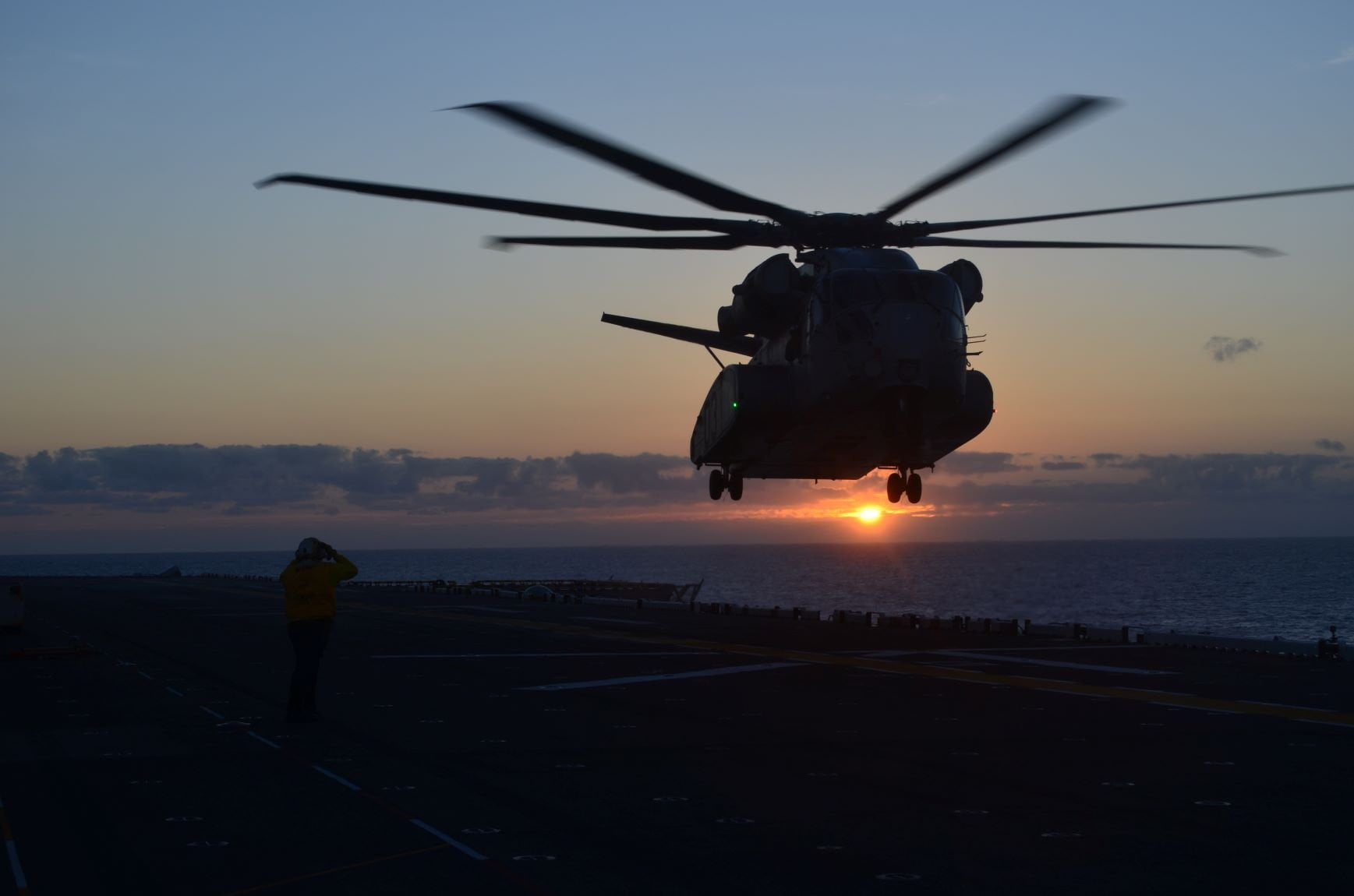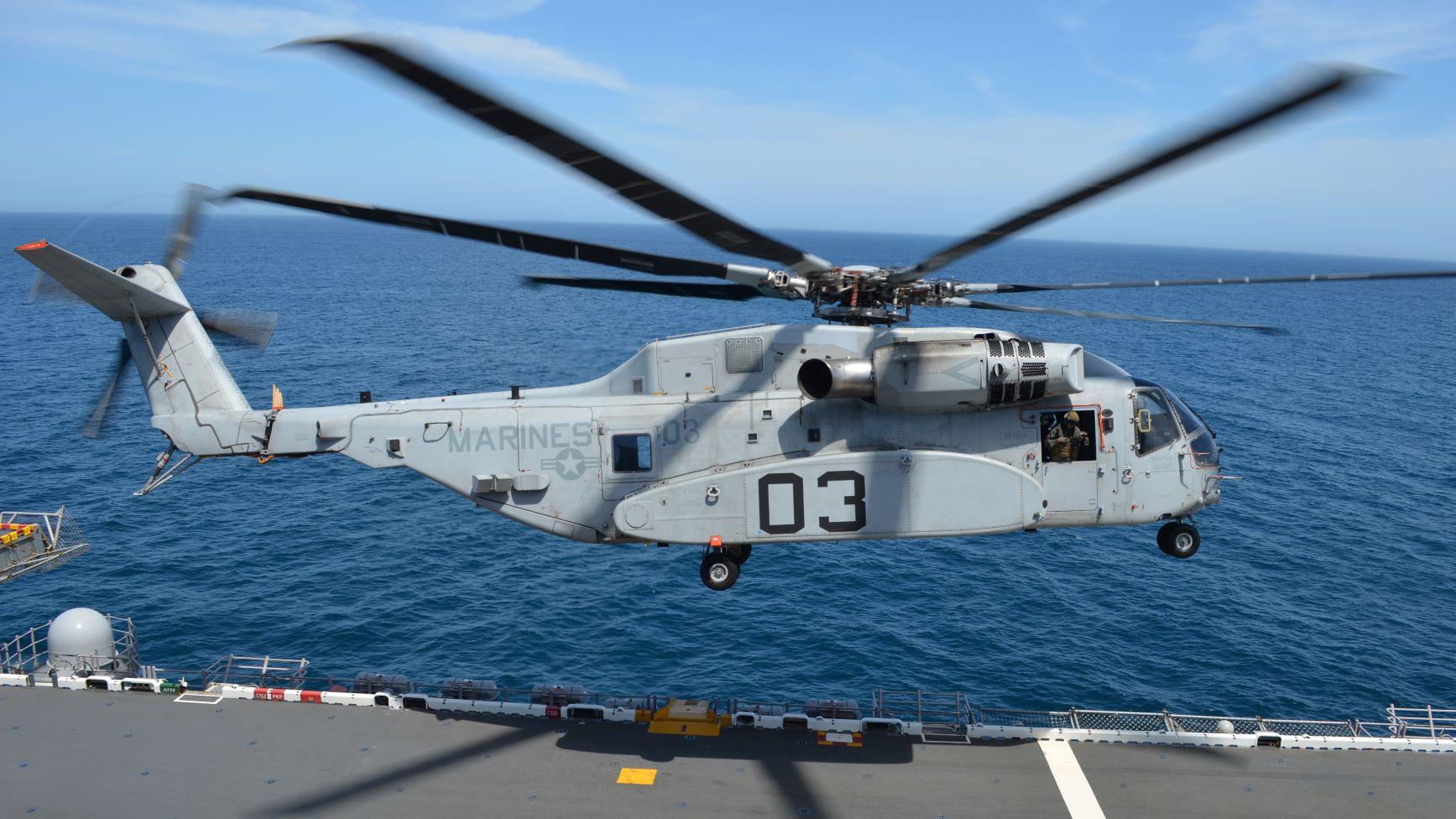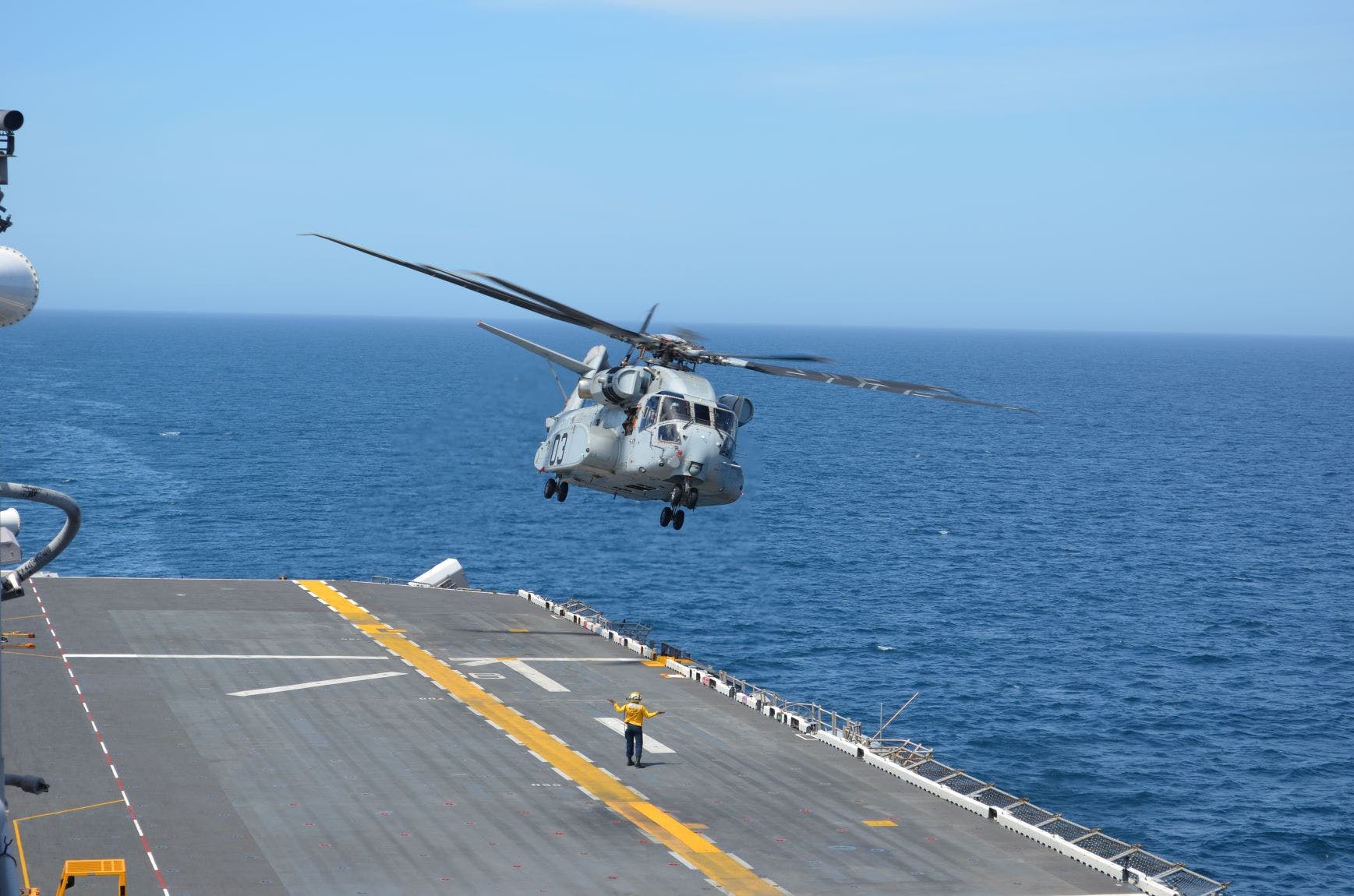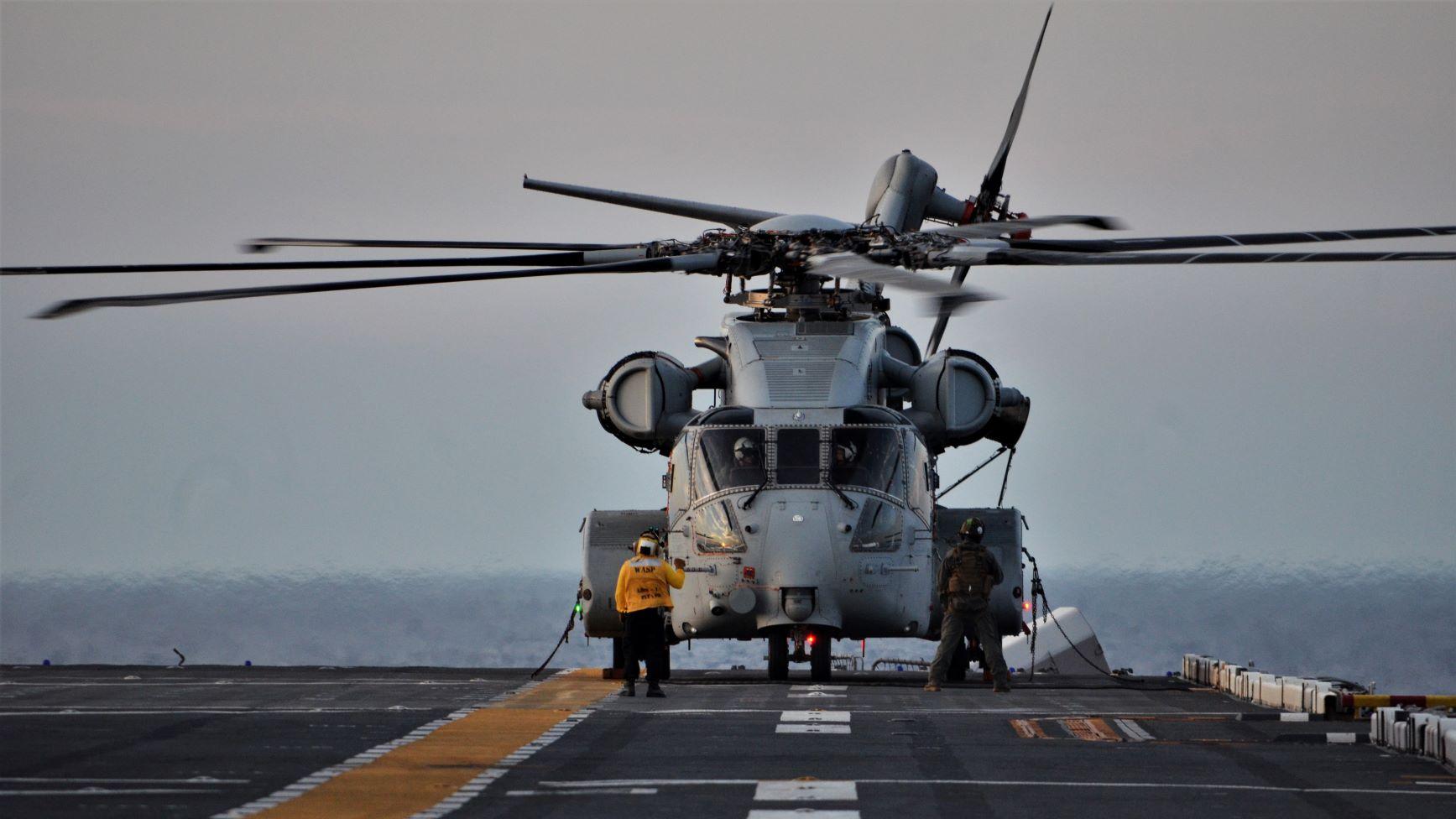By Robbin Laird
In our recent series on mobile basing, we highlighted the evolution of USMC capabilities which can enable ways ahead with regard to mobile basing.
We have argued that for the USAF and the US Navy, the capability of the USMC to provide chess pieces on the kill web chess board in the Pacific is a key contribution which the Marines can provide.
Logistics support for mobile and expeditionary bases is a key challenge and requirement for successful distributed force able to be integrated in a fluid battle space.
In a recent interview, we focused on the fact that with regard to }basing for the integrated distributed force, clearly there is a need for another layer, namely, the ability to sustain the force, including the fuel to drive the force.
“For the Marines operating from the sea, this clearly includes combat ships, MSC tankers and related ships, as well as airborne tanker assets.
“By deploying a relatively small logistics footprint FARP or ARP, one can provide a much wider of points to provide fuel for the combat force.
“And in Marine terms, the size of that footprint will depend on whether that FARP is enabled by KC-130J support or by CH-53E support, with both air assets requiring significantly different basing to work the FARP.”
That interview focused on innovations in terms of providing more mobility for FARPs and the role of new fueling solutions to the distributed force.
One takeaway from that interview was that innovative delivery solutions can be worked going forward.
When I met with Col. Perrin at Pax River, we discussed how the CH-53K as a smart aircraft could manage airborne MULES to support resupply to a mobile base.
As Col. Perrin noted in our conversation: “The USMC has done many studies of distributed operations and throughout the analyses it is clear that heavy lift is an essential piece of the ability to do such operations.”
And not just any heavy lift – but heavy lift built around a digital architecture.
Clearly, the CH-53E being more than 30 years old is not built in such a manner; but the CH-53K is.
What this means is that the CH-53K “can operate and fight on the digital battlefield.”
And because the flight crew are enabled by the digital systems onboard, they can focus on the mission rather than focusing primarily on the mechanics of flying the aircraft. This will be crucial as the Marines shift to using unmanned systems more broadly than they do now.
For example, it is clearly a conceivable future that CH-53Ks would be flying a heavy lift operation with unmanned “mules” accompanying them. Such manned-unmanned teaming requires a lot of digital capability and bandwidth, a capability built into the CH-53K.
If one envisages the operational environment in distributed terms, this means that various types of sea bases, ranging from large deck carriers to various types of Maritime Sealift Command ships, along with expeditionary bases, or FARPs or FOBS, will need to be connected into a combined combat force.
To establish expeditionary bases, it is crucial to be able to set them up, operate and to leave such a base rapidly or in an expeditionary manner (sorry for the pun).
This will be virtually impossible to do without heavy lift, and vertical heavy lift, specifically.
Put in other terms, the new strategic environment requires new operating concepts; and in those operating concepts, the CH-53K provides significant requisite capabilities.
So why not the possibility of the CH-53K flying in with a couple of MULES which carried fuel containers; or perhaps building a vehicle which could come off of the cargo area of the CH-53K and move on the operational area and be linked up with TAGRS?
Recently, the USMC-Navy team have completed sea trials with the CH-53K which provide a step ahead towards such a solution set.
NAVAIR issued this press release on June 24, 2020 about the sea trials:
The CH-53K King Stallion completed a two-week period of sea trials in the Atlantic earlier this month. This was the first opportunity to see the aircraft working in a modern naval environment.
Testing took place on the USS Wasp, a landing helicopter dock (LHD) amphibious assault ship operated by the U.S. Navy.
“I’m very pleased with how the ship tests went,” said Col. Jack Perrin, H-53 helicopters program manager. “We were able to assess the K taking off and landing day, night, and with night vision goggles and it performed extremely well.”
According to the CH-53K integrated test team, the sea trials are a series of tests to evaluate the performance of the aircraft at sea. Tests performed during the two weeks included: launch and recovery; rotor start and shutdown; blade fold; and shipboard compatibility testing – all in increasing wind speed and varying wind directions relative to the aircraft.
“The bulk of the testing was in launch and recovery,” said Perrin, “and we nailed it every time, no matter what the wind/sea conditions were. The 53K is now a “feet-wet” warrior from the sea.”
Ship compatibility testing includes towing the aircraft around the deck and in the hangar, performing maintenance while aboard the ship, ensuring the aircraft fits in all the locations it needs to around the ship deck and hangar, and evaluating chain/tie-down procedures.
The CH-53K King Stallion continues to execute within the reprogrammed CH-53K timeline, moving toward completion of developmental test, leading to initial operational test and evaluation in 2021 and first fleet deployment in 2023-2024.
The Sikorsky program director for CH-53K, Bill Falk, provided his judgement on the sea trials as follows:
“The CH-53K demonstrated exceptional performance through out its initial sea trials continuing the team’s progress towards initial operational test and evaluation in 2021 and deployment in 2023-2024.
“Executing 364 ship landings and takeoffs from all deck spots, expanding the wind envelope, performing multiple towing and hanger evolutions, and conducting multiple rotor blade spread, fold, engagement and disengagement operations, the CH-53K is right at home aboard a large deck amphibious ship and is one step closer to deployment.
“The King Stallion, the only 21st Century fully marinized heavy lift helicopter, excelled in the shipboard environment reinforcing its critical role allowing Marines the operational flexibility to move more material, more rapidly from ship to shore. “
And in a story published by USNI News on June 25, 2020 and written by Megan Eckstein, an interview with Col. Perrin was highlighted where he focused on the sea trials.
Col. Jack Perrin, the H-53 heavy lift helicopters program manager for Naval Air Systems Command, told USNI News in a June 24 interview that the sea trials were meant to test all the ways the helicopter interfaces with a ship: communications while in flight, the ability to land on all nine spots on the flight deck in all weather and lighting conditions, the ability to be towed around the flight deck and hangar bay, the ability to be folded up and tied down, the ability to be maintained at sea and more.
The helicopter conducted two flight periods a day, one in daylight and one at night – taking off, with the pilots recording notes on the difficulty and safety of that particular evolution; flying a mile or so from the ship; flying back in the traditional landing pattern to attempt a landing; recording notes on that landing; and then the ship turning into a new wind condition for the process to start over again.
Though sea trials with some other programs have exposed problems that needed to be addressed through technical or procedural changes, “we were very fortunate; we did not find that big thing that was going to cause us risk or delay or a big technical issue. With this, we have now gone through this program and hit pretty much everything that they aircraft needs to do in order to deploy. We still have some more data to take, we have some tests to finish up, but we’ve been to every big thing,” Perrin said.
“We’ve done the external loads, done the internal loads, we went out and did helicopter aerial refueling, and now we’ve gone to the ship and been out there and seen that. Our risk on this program, for the 53K not being able to go out and support that first deployment and get through [operational testing], is greatly reduced now because of the success we’ve had and the performance the aircraft has shown during this test and the test previous. So we’re pretty happy as a program.”
Perrin said that, having just come back ashore this week, the final report from testing wasn’t complete yet. There were likely some little ways where the program can make improvements ahead of handing the aircraft over to Marine Corps operational testers this fall, he said, but there were no “show-stoppers” that caused him concern.
About 98 people flew out to Wasp for the sea trials, with the integrated test team including representatives from the NAVAIR program office, manufacturer Sikorsky and the Marine Corps’ operational test community.
A key feature of the King Stallion compared to the CH-53E Super Stallion – aside from being able to lift more – is that it’s much easier to operate due to the fly-by-wire flight control system.
Perrin noted the ease of operations during the April 6 aerial refueling test with a KC-130 tanker, saying, “it’s usually a pretty difficult, demanding task, but the 53K handled that extremely well and we had very good handling qualities out of that.”
During sea trials, the colonel added, “the handling qualities of the aircraft at the ship were excellent. All the initial pilot feedback has been that the handling qualities of the 53K on all spots, day, night, in [night vision goggles], was very very good. They were all very impressed … (with) how much easier it was for the pilot to actually come back and land on the ship because of the flight control system, because of the fly-by-wire system on the 53K, which is very good….”
Perrin said one of the highlights of sea trials was having Foxton and a dozen other operational test Marines out on the ship, with pilots in the cockpit, crew chiefs in the back of the helo and maintainers on the ship – all getting a sneak peak at how this helicopter compares to its predecessor.
“They now understand what it can do and what tactics, techniques and procedures, or TTPs, that they’re going to need to adjust from what we do with the 53E to how the 53K operates. So they are getting a complete heads start on having those tactics, techniques and procedures developed, so that when they go to the official IOT&E or initial operational test and evaluation, they’ve already been on the aircraft, they’ve already been flying the aircraft, they’ve already seen this,” he said.
“When they go out to the ship as part of the test – and they will go out to a ship as part of the IOT&E – they’re going to be running instead of learning at that time. They’re going to be executing. And that’s the key of an ITT or integrated test team, is that everybody gets to learn together.”





